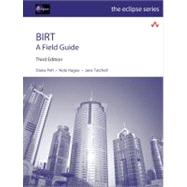
What is included with this book?
Diana Peh, Nola Hague, and Jane Tatchell are members of the extended BIRT development team and have backgrounds in both computer science and technical writing. Collectively, they have many years of experience in technical consulting, training, writing, and publishing about reporting, business intelligence tools, and database technologies.
The New copy of this book will include any supplemental materials advertised. Please check the title of the book to determine if it should include any access cards, study guides, lab manuals, CDs, etc.
The Used, Rental and eBook copies of this book are not guaranteed to include any supplemental materials. Typically, only the book itself is included. This is true even if the title states it includes any access cards, study guides, lab manuals, CDs, etc.